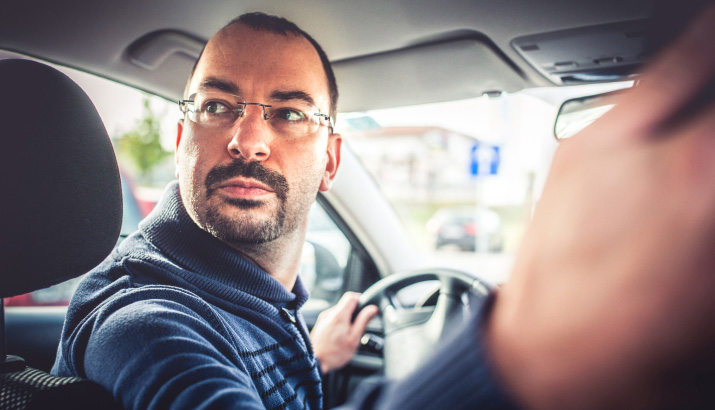Why car accidents are more likely to happen near your street

Familiarity breeds car accident risk
Beware of increased motor accident risk on the dreary drive home
Unsurprisingly, most car accidents happen in the late afternoon and evening, as traffic picks up with tired after-workers seeking solace from the daily grind. As a driver’s alertness decreases due to the repetitive commute and worsening light conditions, the likelihood of a motor accident increases.
Just before rush hour tends to be a peak time for fatal crashes. In more populated areas the most dangerous time to be on the road is between 3 PM and 4 PM, according to Teletrac Navman’sanalysis of Australian Government statistics. Familiar routes can cause people to drive more recklessly - letting their guards down and engaging in risky behaviours.
Beware of increased motor accident risk on the dreary drive home

The effects of car accidents
Physical injuries
Trauma for those involved

Safe driving tips to help prevent motor accidents
Know the law and follow the rules
Make sure you’re familiar with the laws and regulations regarding the roads in your area such as speed limits, traffic signals, and parking restrictions.
If you don’t wear a seatbelt you’re breaking the law, even if you’re just going somewhere nearby. Also, never drive distracted or under the influence of drugs or alcohol.
Keep an eye on driving conditions
Bad weather can adversely affect driving conditions, particularly if your area is prone to heavy rain, snow, or ice. Take extra care when driving in these conditions by:
- Making sure your vehicle is equipped with good tyres.
- Turning your lights on in fog or darkness.
- Using a windscreen defogger.
- Increasing the gap between your vehicle and the vehicle in front to allow more time to stop.
Stay alert
Don’t let familiarity lead to careless, or potentially reckless, driving. Even if you know the road and neighbourhood well, don’t allow yourself to be distracted. Construction and road works may cause unexpected lane closures and detours, so stay alert and obey any road signs or instructions from construction workers.
Similarly, watch out for anyone sharing the road with you. When you encounter pedestrians and cyclists, make sure you’re extra cautious, especially when turning, changing lanes or near pedestrian crossings.
When you’re on the road, whether for long or short drives, make sure you’ve got the right insurance cover.
Find more articles and tips to help reduce your risk of needing to make a claim.
Want to find out more about our Car Insurance?
Disclaimer
This article has been prepared by Allianz Australia Insurance Limited ABN 15 000 122 850 AFSL234708 ("Allianz"). In some cases, information has been provided to us by third parties and while that information is believed to be accurate and reliable, its accuracy is not guaranteed in any way.
Any opinions expressed constitute our views at the time of issue and are subject to change. Neither Allianz, nor its employees or directors give any warranty of accuracy or accept responsibility for any loss or liability incurred by you in respect of any error, omission or misrepresentation in this article.
We're here to help
Give us a call, or send us a message
Follow us on
Any advice here does not take into account your individual objectives, financial situation or needs. Terms, conditions, limits, and exclusions apply. Before making a decision about this insurance, consider the relevant Product Disclosure Statement (PDS)/Policy Wording and Supplementary PDS (if applicable). Where applicable, the PDS/Policy Wording, Supplementary PDS and Target Market Determination (TMD) for this insurance are available on this website. We do not provide any form of advice if you call us to enquire about or purchase a product.
Allianz Australia Insurance Limited ABN 15 000 122 850 AFS Licence No. 234708 is the insurer of any general insurance products offered, and Allianz Australia Life Insurance Limited ABN 27 076 033 782 AFS Licence No. 296559 is the insurer of any life insurance products offered. Each entity is responsible for any statements and representations made about its products, on this website.